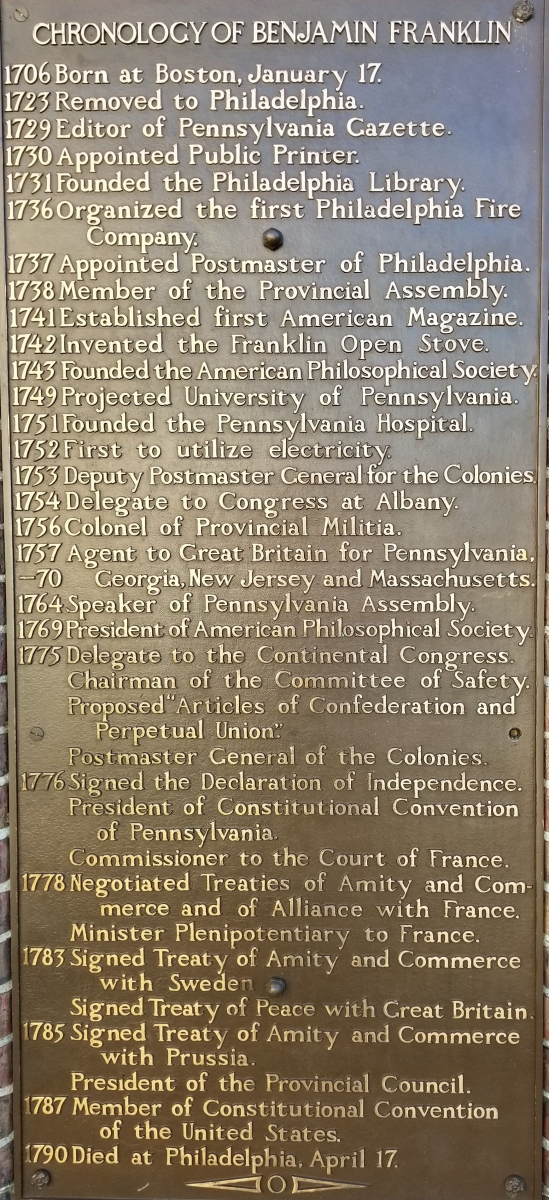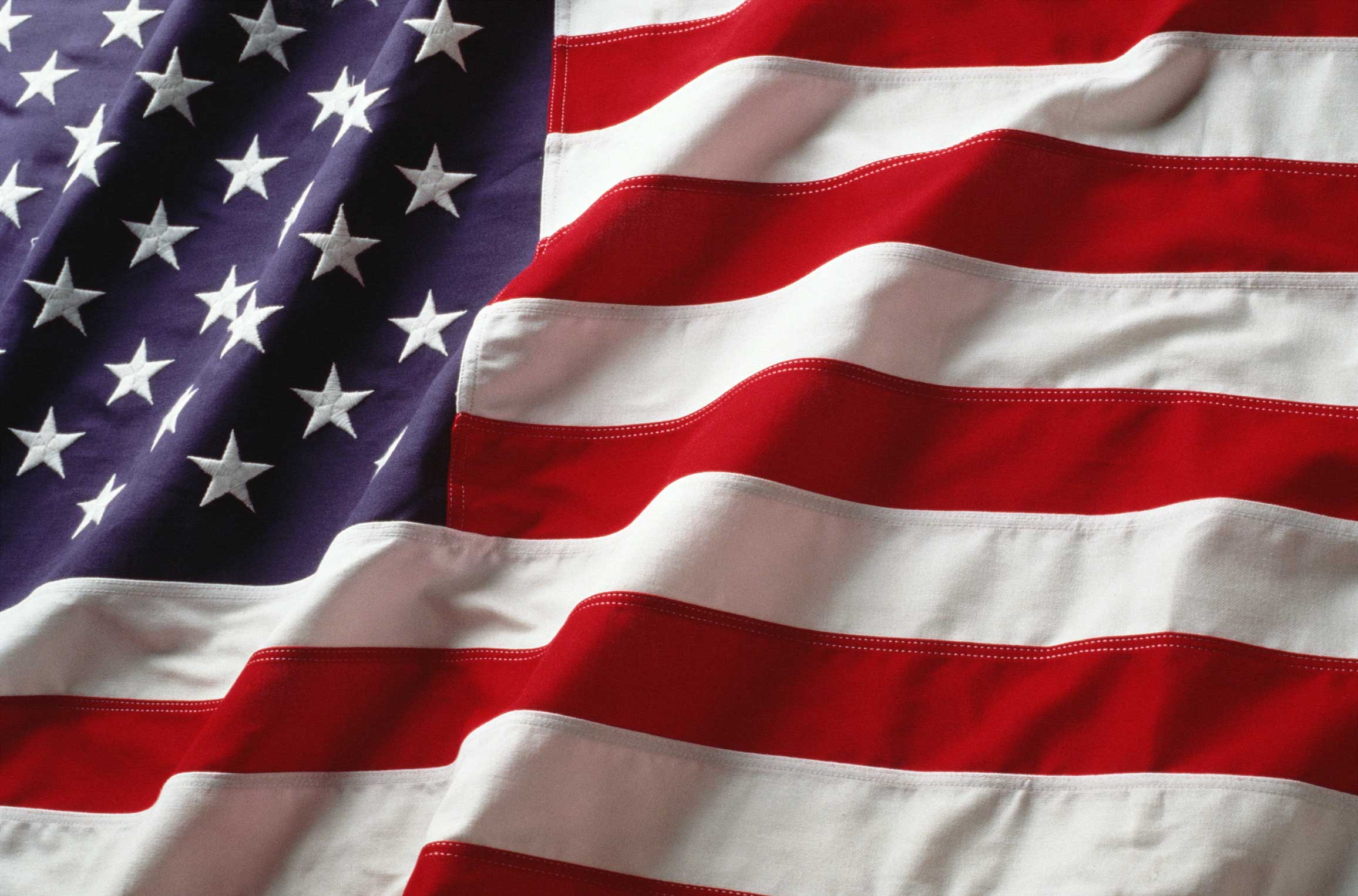Benjamin Franklin - One of America's Founding Fathers
Related Posts
- Buy Tickets for The Constitutional Walking Tour of Philadelphia – See 20+ Sites on a Primary Overview of Independence Park, including the Liberty Bell and Independence Hall
- Second Continental Congress
- Constitutional Convention
- Independence Hall
- Signers' Garden
- Signers' Walk
- National Constitution Center
- Franklin Court
- Library Hall
- Philosophical Hall
- Franklin Institute
- University of Pennsylvania
- Pennsylvania Hospital
- Christ Church
- Christ Church Burial Ground
Birth: January 17, 1706
Death: April 17, 1790 (age 84)
Colony: Pennsylvania
Occupation: Printer, Scientist, Author, Inventor, Statesman, Politician
Significance: Signed The Declaration of Independence (at the age of 70); signed the Treaty of Paris (at the age of 77); signed the United States Constitution (at the age of 81); Served as First Postmaster General of the United States (1775-1776); served as United States Minister to France (1779-1785); served as the President of Pennsylvania (1785-1788); revered as "Philadelphia's Favorite Son"

Benjamin Franklin was a Founding Father of the United States of America. During his 84-year life, Franklin also was a very accomplished author, diplomat, inventor, philanthropist, political pundit, printer, statesman and scientist.
Franklin was the 15th of 17 children in a working class family born to Josiah Franklin and Abiah Folger in Boston, Massachusetts. Franklin received only a brief education, attending Boston Latin, but he left due to financial reasons. In total, Franklin completed just two years of formal schooling. After his brief education, Franklin worked for his father who was a soap and candle maker, before his father allowed him to apprentice with Franklin's older brother, James, who was a printer.
James taught Benjamin the printing trade, but the two siblings often clashed with one another. Even from a young age, Franklin had many ideas and ambitions, and he felt James was holding him back. After James rejected Franklin’s attempts to write for his paper, the New-England Courant, Franklin sent a letter to the newspaper under the pseudonym “Silence Dogood.” James printed the letter and subsequent letters written by Franklin under the name “Silence Dogood,” a widowed middle aged lady who passionately wrote about free speech and the rights of Bostonians. Over time, Silence Dogood became somewhat of celebrity in Boston. However, James was unaware that Ben was posing as Silence Dogood, and when he discovered the ruse, the relationship between the two brothers further deteriorated, culminating when Benjamin ceased his apprenticeship without James’ permission, and Benjamin left Boston at the age of 17.
Franklin traveled South to the City of Philadelphia. At the time in 1723, Philadelphia had only been established for about 41 years, but it was already on the verge of growing into the most populous city in the American Colonies, and was it was viewed as the Colonies’ cultural center. Franklin sought to open his own printing shops, but Franklin had trouble getting started. Franklin’s efforts eventually took him to London, where he spent a few years, before returning to Philadelphia in 1726. Shortly after his return to Philadelphia, Franklin started his printing business.
Printing Career
Franklin purchased a struggling newspaper that he renamed the Pennsylvania Gazette in 1730. With Franklin as the editor, the Pennsylvania Gazette quickly gained prominence in Philadelphia. Franklin was not content with dominating the Philadelphia newspaper market so Franklin eventually moved to create a network of printing shops throughout the Colonies. These efforts paid off, and the Pennsylvania Gazette grew into the most circulated newspaper in the Colonies.
While working as a printer, Franklin also began printing scholarly journals and other books, including “Poor Richard’s Almanack", which Franklin himself authored under a pseudonym. The books were wildly popular in the American Colonies and were among the best selling books in America for 25 years. Many of the best known Franklin quotes today are technically attributed to his pseudonym, Poor Richard, and these witticisms first appeared in Poor Richard’s Almanack, including phrases such as “three may keep a secret, if two of them are dead” and “early to bed and early to rise, makes a man healthy, wealthy and wise.”

Communications & Social Media, Long Before the Internet
On December 16, 2006, Rick Stengel, Time Magazine’s Managing Editor, and former CEO of the National Constitution Center wrote the following article, "Now It's Your Turn" in Time's Person of the Year tribute to "You" in recognition that, largely thanks to the power of the Internet, individuals were wielding power in new and dramatic ways with user generated content. Stengel commented on mass communication dating back to the time of the Founding Fathers.
“…America was founded by amateurs. The framers [Founding Fathers] were professional lawyers and military men and bankers, but they were amateur politicians, and that’s the way they thought it should be. Thomas Paine was in effect the first blogger, and Ben Franklin was essentially loading his persona into the MySpace of the 18th century, Poor Richard’s Almanack.”
Deborah Read
While starting the Pennsylvania Gazette, Franklin also began a common-law marriage with Deborah Read. Deborah’s mother was the owner of the boarding home in which Franklin lived when he first arrived in Philadelphia as a 17 year old. After living in Philadelphia for roughly a year, an 18 year old Franklin proposed to Deborah, but her mother had refused him due to Franklin’s limited financial resources.
In 1727, Franklin, who was now 21 and had recently moved back to Philadelphia from London, reconnected with Deborah. Deborah had already been married, however her husband had taken her dowry and fled the Colonies. Further complicating matters was the fact that Franklin already had his first son, William, who had just recently been born to an unknown mother. Despite the challenges, Franklin and Deborah were married on September 1, 1730. Because Deborah had never acquired a divorce from her first husband before he had deserted her, she was technically unable to wed again, and so Franklin and Deborah’s marriage was considered a common law marriage.
Public Institutions
As Franklin rose to prominence as a printer, he ascended to a new social status and frequently used his newly acquired status and wealth to form historic public institutions, many of which have lasted to the present day. The first such institution was "the Junto" which was a collective of tradesmen who wished to better themselves. Franklin founded "The Junto" in 1727 at the age of 21. Many of Franklin's later institutions were an outgrowth of ideas developed within The Junto.
By 1731, a small library collection that The Junto had started, was chartered as the Library Company of Philadelphia, the first public lending library in America. By 1743, The Junto had grown in the American Philosophical Society, the first scholarly society in the American Colonies. Franklin played a crucial role in the creation of both American firsts.
In 1736, Franklin created the Union Fire Company, the first volunteer fire company in America. In 1749, Franklin was among the founders of the Academy and College of Philadelphia (now the University of Pennsylvania, which is today also referred to as Penn), which became America's first university. In 1751, Franklin helped establish Pennsylvania Hospital, which was America’s first hospital. And then the following year, Franklin established the Philadelphia Contributionship, the first fire insurance company in the American Colonies.

All of these new institutions began to greatly change Philadelphia in many ways including with education, medicine, science, finance and public services. Franklin also encouraged leaders in other cities throughout the Colonies to follow his lead and to establish public schools, libraries, hospitals, etc., in their respective cities. This led to widespread social change in the Colonies since more people gained access to knowledge, information and healthcare, for example.
Franklin as a Scientist
Despite having little formal education, Franklin was always interested in science, and he was a voracious reader. Franklin performed his first rudimentary experiments and created his first inventions when he was still a child. One of Franklin's first inventions, a type of wooden swimming flippers, would even earn him entrance to the International Swimming Hall of Fame as a posthumous honor in 1968. Franklin became even more engaged in the scientific community after he retired from the day to day operation of his printing shop in 1747, at the age of 41.
Franklin’s most famous inventions involved his studies and experiments regarding electricity. Contrary to popular belief, Franklin was not the first to “discover” electricity. Franklin was however the first to prove that lightening was comprised of electricity, and Franklin conducted many experiments pertaining to electricity. Franklin established that lightening was electricity in his writing about his famous Kite and Key experiment, which Franklin is thought to have conducted in 1752.
Franklin also experimented with primitive batteries known as Leyden jars and through his experiments, Franklin created much of the scientific terminology related to electricity that is still used to this day. Positive charge, negative charge, and battery are among the terms first developed by Franklin.
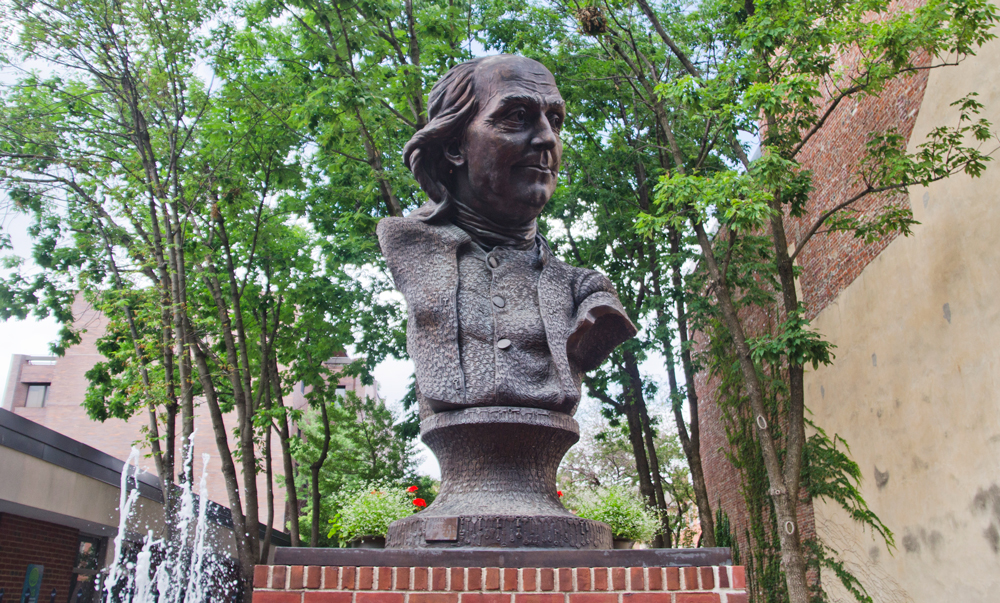
Franklin also studied concepts as varied as air conditioning (a series of experiments noting how evaporation reduced temperatures) to ocean currents (studying the Atlantic Ocean’s Gulf Stream current on his many trips back and forth across the Atlantic Ocean).
Franklin’s scientific endeavors also led to the creation of numerous inventions which included the lightening rod, the Franklin stove, bifocals, and even a musical instrument, the glass armonica.
Franklin's Entrance to Politics and His Return to London
After retiring from printing, Franklin also became involved in politics, successfully running for the Philadelphia City Council in 1748, and by 1751, Franklin had a earned a seat in the Pennsylvania Assembly. In 1753, Franklin was named the first Postmaster General of the American Colonies and Franklin subsequently reformed the American postal system by improving service and profitability.
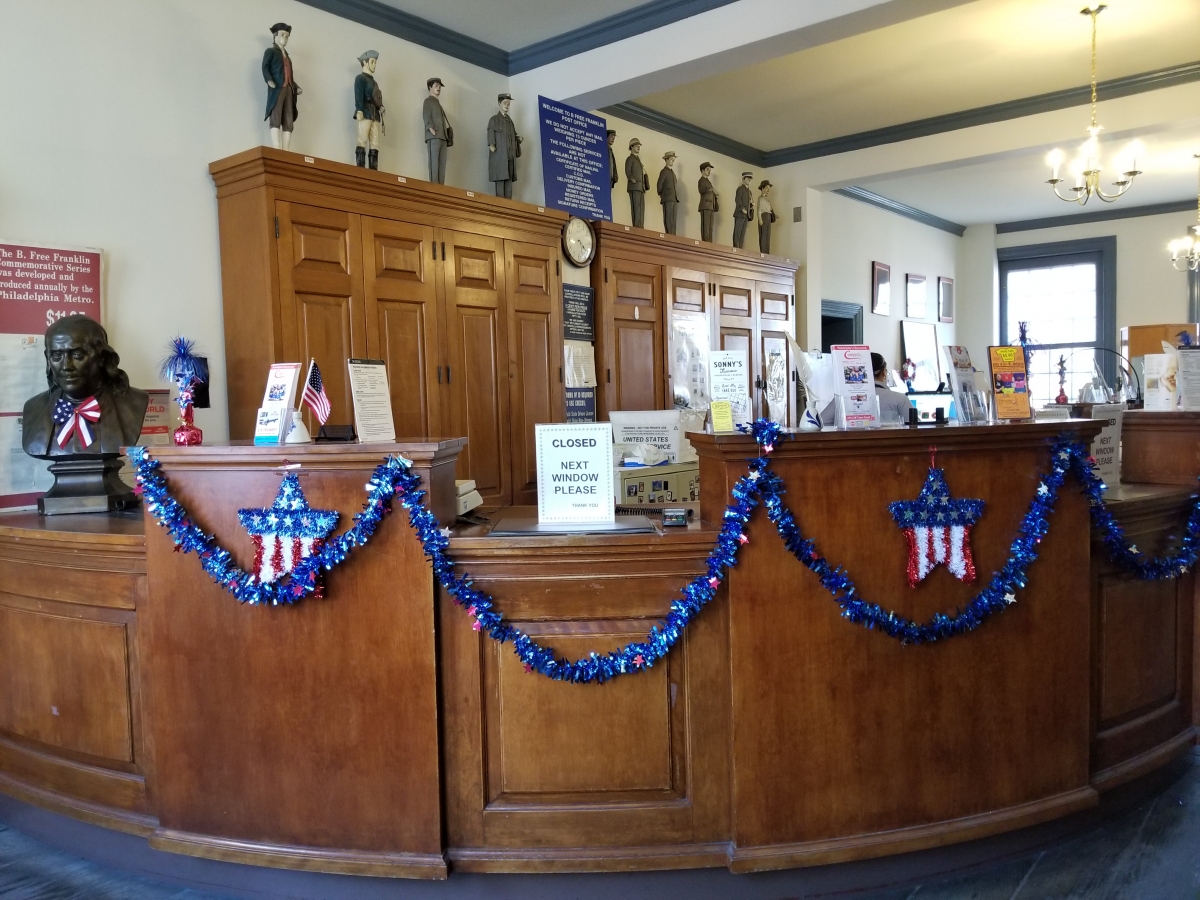
Franklin returned to London in 1757 on behalf of the Pennsylvania Assembly to try and settle a dispute between the Colonial government and William Penn’s heirs, who were the proprietors of the Colony of Pennsylvania, and had used their power to overturn legislation passed by Pennsylvania’s Colonial government. Franklin ended up spending most of the following 18 years of his life in London. During this time abroad, Franklin's wife Deborah largely remained behind in Philadelphia, and thus it was Deborah who oversaw the construction of Franklin's final home in Philadelphia, Franklin Court. Deborah passed away in 1774 while Franklin was still in London. Deborah is buried next to Benjamin Franklin at Christ Church Burial Ground.

While Franklin was in London fighting to reduce the Penn family’s control of Pennsylvania, tensions between the American Colonies and Britain began to escalate. Franklin was in London in 1765 when the British Parliament passed the Stamp Act, and while there were many critics of the act back in the American Colonies, Franklin was able to assume a louder voice than most due to his presence in London. Franklin testified before Parliament and criticized the Stamp Act, eventually leading to the repeal of the Stamp Act. Franklin also capitalized on his fame as a scientist and inventor to meet with influential people and argue on behalf of the colonies. As other colonies recognized Franklin’s unique influence in London among Americans, Franklin became the official representation of numerous colonies in London. Aside from Pennsylvania, Franklin also was named the agent to the Crown for the colonies of Massachusetts, New Jersey, and Georgia.
While Franklin sided strongly with the colonists in their dispute against Britain, he believed the colonies would be best served by resolving their differences and remaining British colonies. As time went on though, Franklin became frustrated by the lack of progress that was made in these resolutions and what he came to believe was a bad faith effort by Parliament.
In 1772, Franklin acquired and arranged for the publication of private letters that showed that the Governor of Massachusetts had schemed to take power from the elected legislative branch and consolidate it for the British appointed governor. Franklin had hoped that the publication of these letters would lead to the Governor of Massachusetts, Thomas Hutchinson, being removed from office. But while the people of Massachusetts were outraged by the letters, they were unable to remove Hutchinson. Worse for Franklin, in leaking the letters, Franklin had destroyed many relationships he had built in London. Franklin was called before the Privy Council in 1774 to answer for his actions, but upon arriving before the Privy Council, Franklin was surprised to instead endure a lengthy and embarrassing attempt to assassinate Franklin's character. The event ended up being a final straw for Benjamin Franklin, who no longer could imagine a peaceful resolution with the British, and he returned to Philadelphia in 1775 as a strong supporter of Independence.
The Declaration of Independence
Franklin arrived at his home in Philadelphia in 1775 in the midst of an especially important time. The Revolutionary War had just started in Boston with the Battles of Lexington and Concord and delegates from thirteen colonies were coming together in Philadelphia for the Second Continental Congress. Franklin himself was chosen to represent Pennsylvania in the congress, where he was a leading voice in favor of independence with Britain. In June 1776, with Independence finally being seriously discussed, Franklin was chosen by John Adams to serve on the Committee of Five, which was created to write a formal declaration of independence. Though the committee ended up choosing Thomas Jefferson to write the first draft of The Declaration of Independence, Franklin edited the document and made some changes to Jefferson’s draft. Most notably, changing some of the words of Jefferson’s preamble so that it began “We hold these truths to be self evident” as opposed to “We hold these truths to be sacred and undeniable.” This was an important distinction for Franklin, as it implied that America’s rights came from natural law as opposed to permission from God.
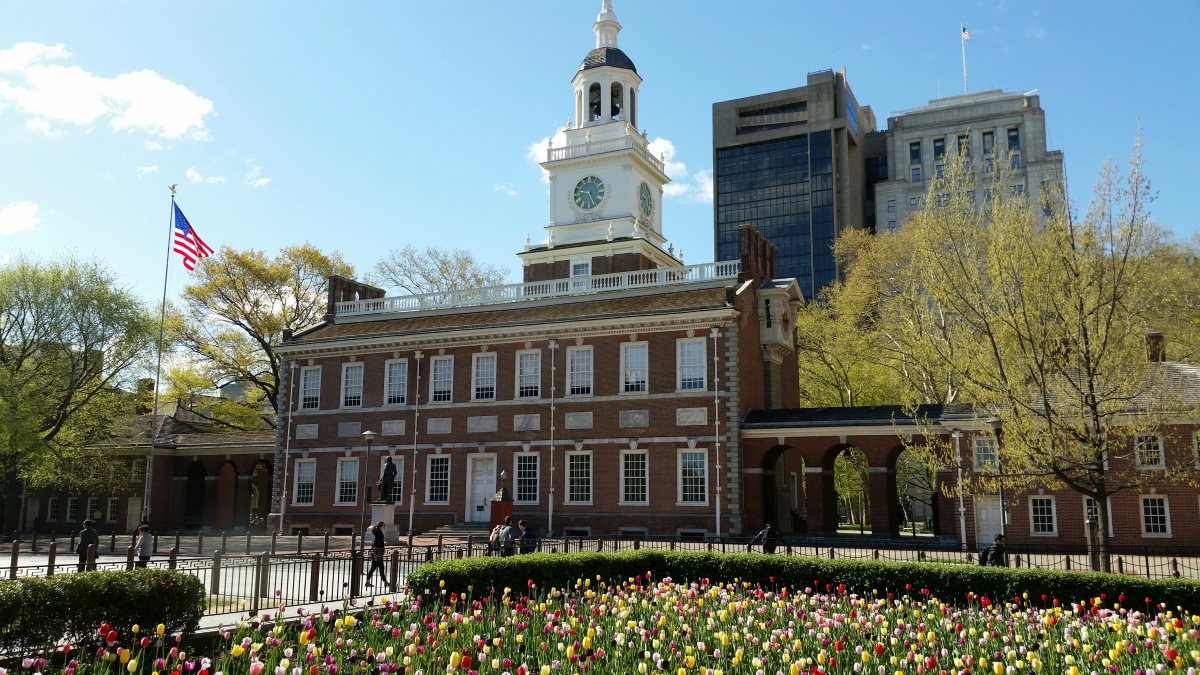
After Jefferson and the Committee of Five (including Franklin) helped write The Declaration of Independence, the Continental Congress then significantly revised the wording, and The Declaration of Independence was ultimately approved on July 4, 1776. On August 2, 1776 Franklin signed The Declaration of Independence and expressed the bond the Founding Fathers then shared after committing treason and risking their lives, reputations and fortunes with the following famous quote:
"We must all hang together or, most assuredly, we shall all hang separately!"
After signing The Declaration of Independence, Franklin did not remain in Philadelphia much longer thereafter. The reason for Franklin's departure was that he was named the United States Commissioner (Ambassador) to France in December of 1776, and he returned to Europe.
Ambassador to France
Franklin was tasked with having the French become America’s allies in the Revolutionary War as well obtaining loans and supplies to support the Continental Army. Franklin arrived in France already famous for his work as a scientist and inventor, as well as an icon of America, which had just declared independence from France’s enemy in Britain. Franklin was a sort of legendary figure and Franklin did nothing to dispel these notions, even going so far as playing into them. Franklin famously wore a fur hat in Paris, even though it was not part of his normal wardrobe. The fur hat was what the French pictured industrious frontiersmen wearing in America, and by playing into that image, it shows the lengths Franklin would go to in order to charm his hosts and engender their support.
Franklin was incredibly successful in Paris, and in 1778, Franklin was able to negotiate the Treaty of Alliance with France. The treaty brought France into the Revolutionary War as America’s allies and was a huge turning point in the war. After securing an alliance with France, Franklin remained in Paris to coordinate the cooperation between the two nations and to push the French to send as much support as possible to America. In 1779, Franklin received word from the Continental Congress that he had been named the first United States Minister to France. Franklin was also named the first United States Minister to Sweden, and although Franklin never visited Sweden, he was nonetheless able to negotiate a commercial alliance with the Nordic nation from Paris.
As the Revolutionary War progressed in America’s favor, Franklin also took the lead on peace negotiations with Britain. Negotiations were tense and lasted over a year, but Franklin was eventually influential in crafting an end to the Revolutionary War. Franklin signed the Treaty of Paris on September 3, 1783, officially ending the Revolutionary War in America’s favor.
The Constitutional Convention, Summer of 1787
Franklin returned to Philadelphia in 1785, and he was quickly elected the President of Pennsylvania, a position equivalent to the modern day Governor of Pennsylvania. Franklin did what he could to manage the state of Pennsylvania, but Franklin was worried by the state of American government. The country was governed by the Articles of Confederation, a weak federal government that was devised during the Revolutionary War and already seemed to be falling apart.
In response to calls to fix the Articles of Confederation, a Constitutional Convention was planned and met in Philadelphia in May of 1787. Franklin was named a named a representative of Pennsylvania for the Constitutional Convention and at the age of 81, participated as the convention’s eldest member. Franklin was in poor health throughout the summer of 1787 and was thus an infrequent participant in the creation of the United States Constitution. When Franklin was healthy enough to attend the Constitutional Convention though, his contributions were of great importance. Franklin was well liked and often served as an arbitrator between warring factions within the convention. Franklin's skill in this regard was noted by the author Walter Isaacson who wrote a bestselling biography of Benjamin Franklin:
“The most important thing he brings to our time is his tolerance and respect for pluralism that he believed was the core of democracy. He was always looking for common ground.”
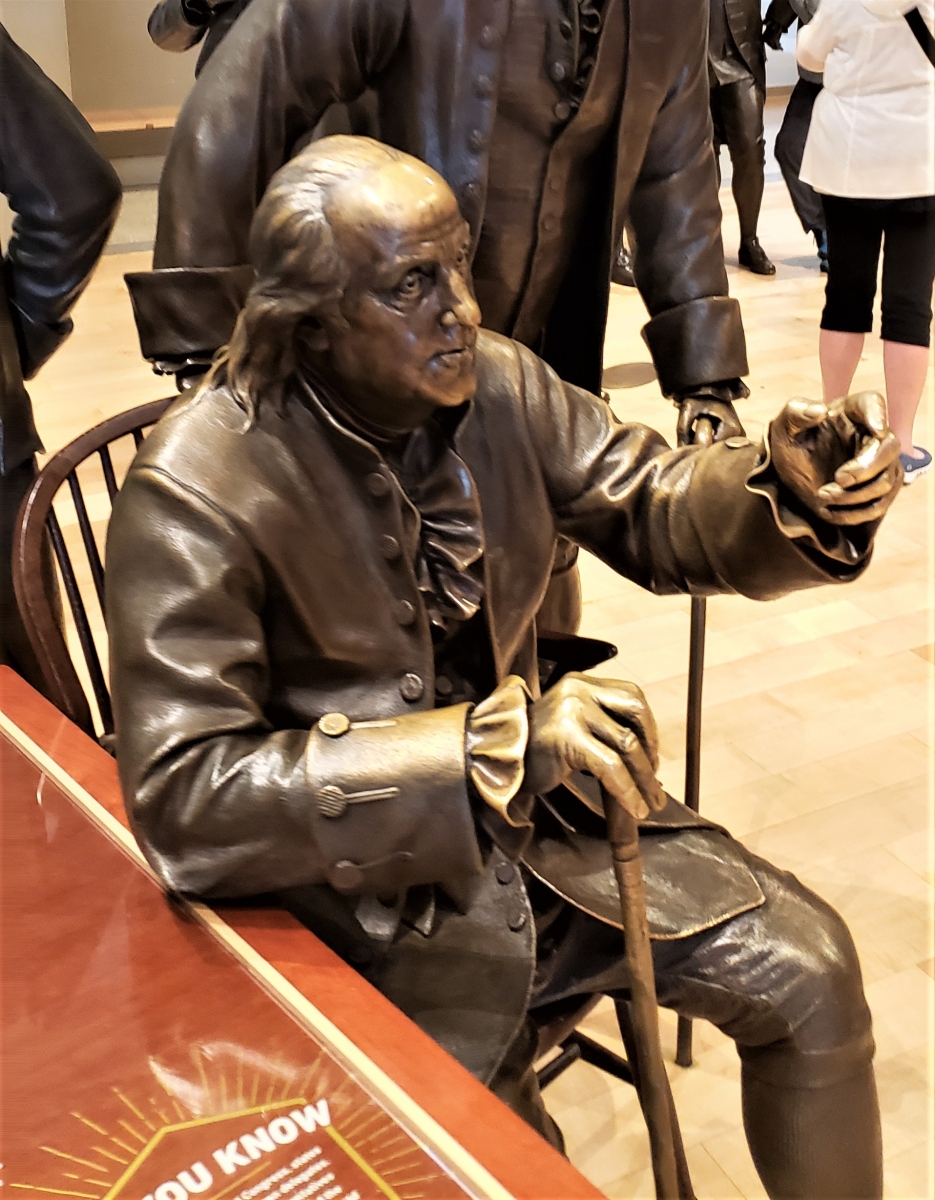
While attending meetings throughout the summer of 1787, there were times where Franklin feared everything would fall apart, so he was greatly relieved when a compromise was finally reached. On the final day of the Constitutional Convention, the United States Constitution was signed on September 17, 1787 (which today is celebrated as Constitution Day). As the Constitution of the United States was being signed, Franklin looked up at George Washington as he often did throughout the Constitutional Convention, as Washington sat in the center of the room serving as the President of the Constitutional Convention. Directly above Washington’s head, there was a half sun carved into the back of his chair. Noting that artists often found it difficult to distinguish between a rising sun and a setting sun in their works, Franklin commented on his optimistic outlook for America's future:
"I have often ... in the course of the session ... looked at that sun behind the President without being able to tell whether it was rising or setting. But now at length I have the happiness to know it is a rising and not a setting sun."
Final Years
Franklin continued to serve as the President of Pennsylvania until the end of 1788, until such time when he had served three one year terms, which was the limit. Serving as the President of Pennsylvania was the final government position that Franklin ever held.
Franklin had freed his slaves and become an opponent of slavery dating back to the 1760s. In his final years though, Franklin became more vocal in his stance against slavery, and to that end, he was named President of the Pennsylvania Abolitionist Society.
Franklin lived to see the United States Constitution go into effect in 1789, but his health continued to worsen and Franklin was rarely able to leave his house in his final years. Franklin died at his home in Philadelphia on April 17, 1790. Over 20,000 people attended his funeral when Franklin was buried at Christ Church Burial Ground in Philadelphia.
Ben Franklin Tercentenary (1706-2006)
In 2006, The Constitutional Walking Tour was selected as a contributing content partner in the 300th-year anniversary of Benjamin Franklin's birth (1706-2006), which was called the Benjamin Franklin Tercentenary, or Benjamin Franklin 300. Benjamin Franklin 300 referred to the year-long commemoration of Franklin’s 300th birthday in Philadelphia and Its Countryside. The celebration ran from Fall 2005 through 2006, and focused on the world premiere of the international traveling exhibition, "Benjamin Franklin: In Search of a Better World" at the National Constitution Center. It was coordinated by the Benjamin Franklin Tercentenary, and included an array of complementary exhibitions, lectures, symposia, concerts and special events, and offers at many of the region’s historical and cultural organizations, including The Constitutional Walking Tour, as well as at Philly area restaurants and hotels.
On April 18, 2006, Page Talbott appeared on C-SPAN from the National Constitution Center in Philadelphia, the first stop in a six-city international tour of the traveling exhibit, “Benjamin Franklin: In Search of a Better World”. After leaving Philadelphia (December 15, 2005 – April 30, 2006 at the National Constitution Center), the exhibit visited St. Louis from June 9, 2006 to September 4, 2006 at the Missouri Historical Society; Houston from October 13, 2006 to January 21, 2007 at The Houston Museum of Natural Science; Denver from March 2 , 2007 to May 20, 2007 at the Denver Museum of Nature & Science; Atlanta from July 4, 2007 to October 14, 2007 at the Atlanta History Center; and Paris from December 4, 2007 to March 30, 2008 at the Musée des Arts et Métiers and Musée Carnavalet.
In the video below, Talbott toured the collection of Philadelphia's Favorite Son, Ben Franklin. Talbott also spoke about the collection, Franklin’s impact on U.S. history, and she even responded to calls from viewers. By way of background, Talbott served as the Chief Curator of the In Search of a Better World exhibit and the Associate Director of Benjamin Franklin 300. In 2002, an Act of Congress had created the Benjamin Franklin Tercentenary Commission to study and recommend government programs to commemorate the 300th anniversary of this beloved Founding Father's birthday. The video below shows a great tour of the exhibit.
Benjamin Franklin in Philadelphia
Benjamin Franklin moved to Philadelphia as a teenager and spent most of his life living in the city. Franklin had an enormous impact upon his adopted city and founded numerous enduring civic institutions that were firsts in Philadelphia and moreover firsts in the United States. As mentioned previously, Franklin founded the America's first public lending library (Library Company of Philadelphia,) America's oldest scholarly society (American Philosophical Society,) America's volunteer fire company (Union Fire House,) America's first university (University of Pennsylvania,) America's first hospital (Pennsylvania Hospital,) and America's first fire insurance company (Philadelphia Contributionship).
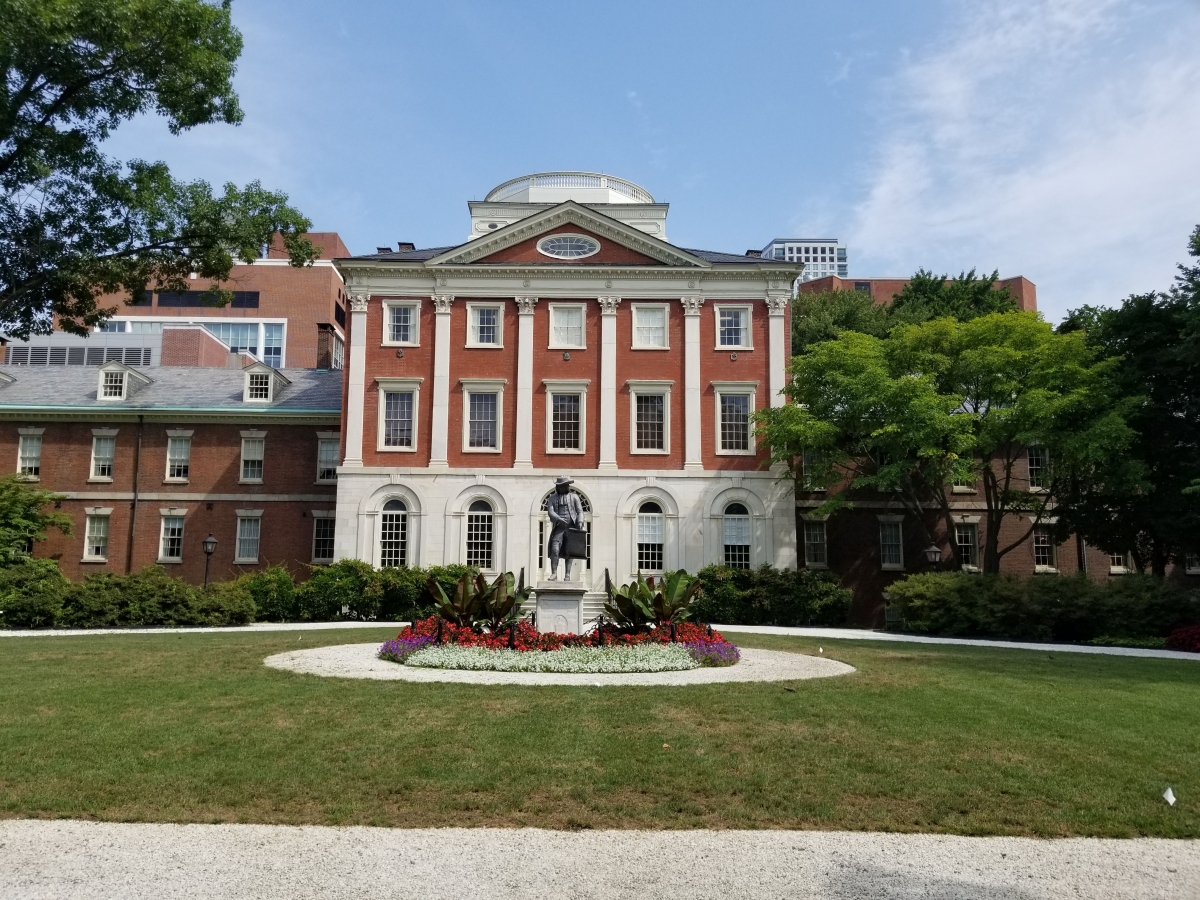
The City of Philadelphia is also filled with many tributes to Franklin who has aguably become "Philly's Favorite Son" even though he's a non-native transplant (though to be fair, Franklin's decision to leave Boston for Philadelphia, is likely part of his charm for many Philadelphians.) Statues and plaques dedicated to Franklin and detailing his accomplishments can be found throughout the city. Many institutions and public assets are also named after Franklin such as the Benjamin Franklin Bridge and Franklin Square. The Franklin Institute is also named after Benjamin Franklin, and the Benjamin Franklin National Memorial can be found inside of this impressive museum located along Museum Mile, also known as the Ben Franklin Parkway in Philadelphia.
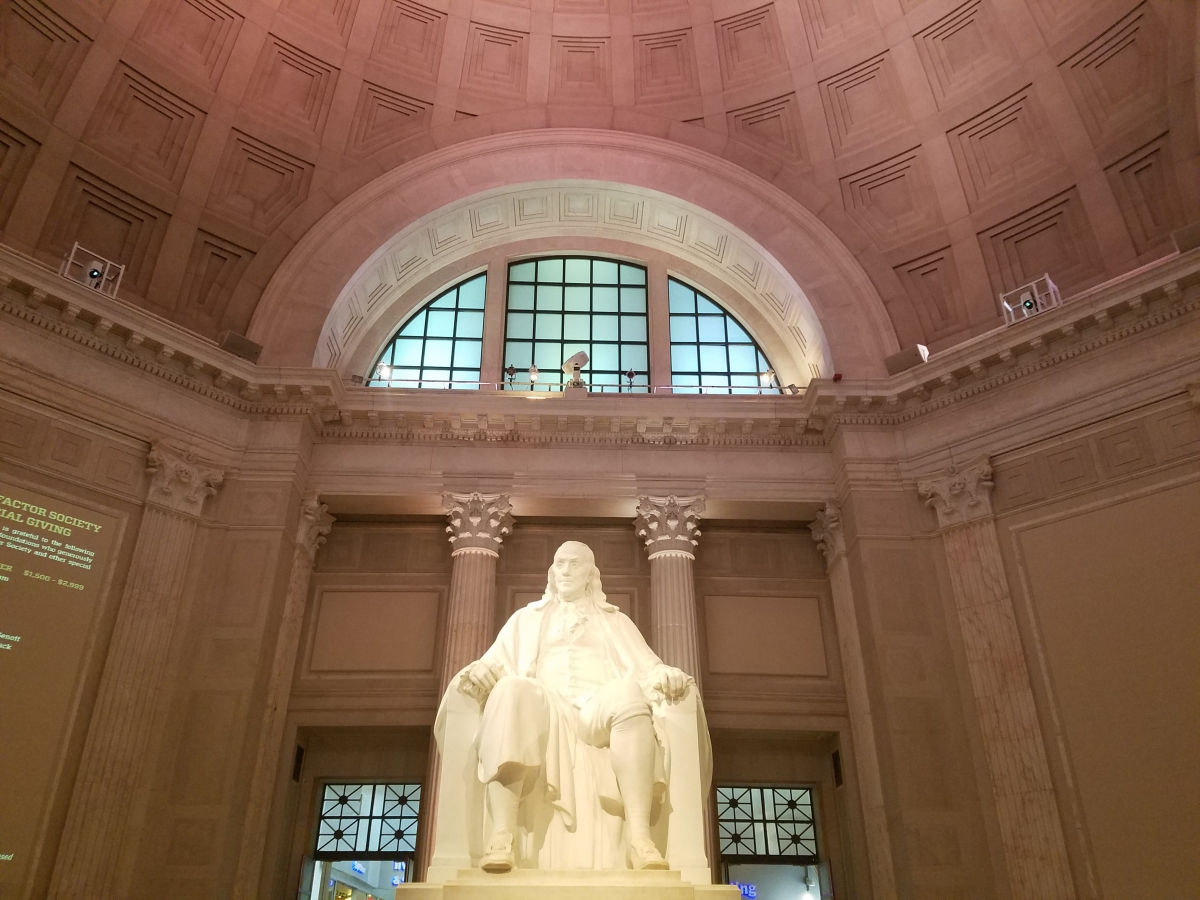
While he was a member of the Second Continental Congress, Franklin worked at Independence Hall, where he helped write and then signed The Declaration of Independence. Franklin also worked at Independence Hall when he helped write the United States Constitution in 1787 at the Constitutional Convention. Franklin worshiped at Christ Church in Philadelphia and following his death, Franklin was buried at Christ Church Burial Ground. At the end of his life, Benjamin Franklin lived at Franklin Court which is now the location of the Benjamin Franklin Museum.
Today, you can also see a statue of Franklin inside of the National Constitution Center in their Signers' Hall exhibit. A plaque commemorating Franklin for signing The Declaration of Independence can also be found on Signers' Walk on the 600 block of Chestnut Street. Signers' Garden also pays tribute to all of those who signed The Declaration of Independence and/or the United States Constitution, or in the case of Franklin, both of these founding documents! The National Constitution Center, Independence Hall, Signers' Walk, Signers' Garden, the original location of the University of Pennsylvania, Library Hall, Philosophical Hall, Christ Church, Christ Church Burial Ground, and Franklin Court are all visited on The Constitutional Walking Tour!



